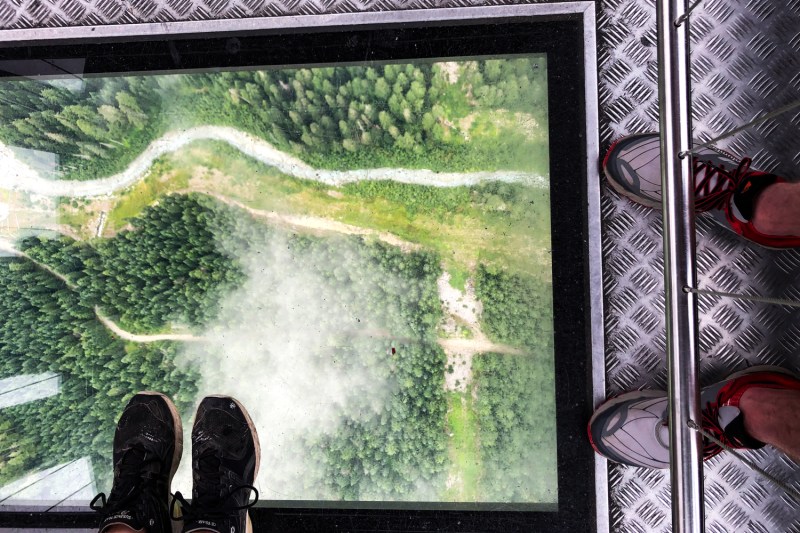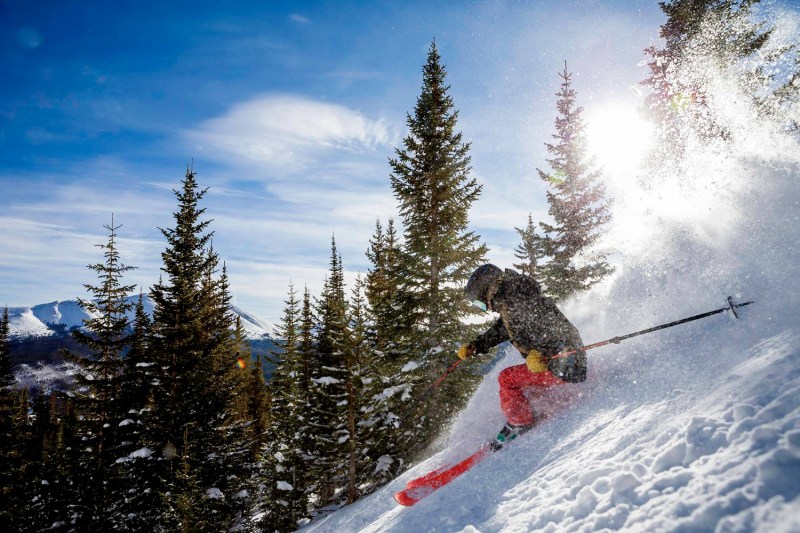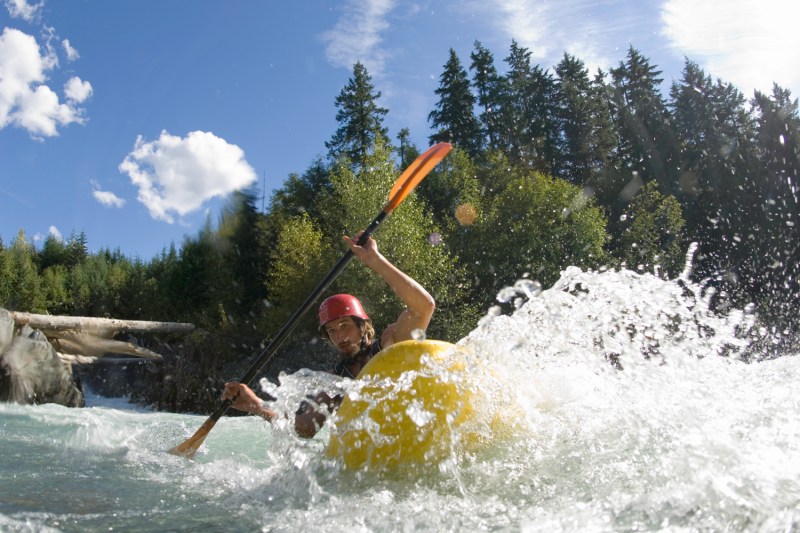When you think of Whistler, British Columbia, the Canadian town (population 12,000) tucked between the bases of Whistler and Blackcomb Mountains, you probably think of skiing. If so, you’re spot on. Indeed the resort hosted many of the downhill events during the 2010 Winter Olympics held in nearby Vancouver, and is considered one of the finest downhill spots on the planet.

Then again, if on hearing the name Whistler your first thoughts are of mountain bikes, you’re right there, too. Whistler is the birthplace and site of the main and final event of the annual Crankworx World Tour — arguably the biggest circuit in mountain biking today — and the go-to destination for tens of thousands of mountain bike enthusiasts, the sport that transformed Whistler from a pricey, upscale ski town to … a pricey, upscale multi-sport town.
If you’re more into hiking, snowshoeing, white water rafting, off-road ATVing, zip lining, snowmobiling, or, for that matter, fine dining and nightlife, Whistler has you covered there, too. The town, which is spread out over more than 90 square miles, sees some 3.5 million visitors each year. Drinking and dining aside, most of them are looking to get outside.

Do keep in mind that Whistler is not a cheap place to visit in any season. Nor is it cheap to live in the town: the median home value is about $1,271,800 USD. And while you can find a decent hotel room for about $100 a night, plan to spend closer to $200 for good lodgings near the city center, which is also near the feet of the mountains. (You can walk from the base of Whistler to the base of Blackcomb in about 15 minutes.)
The busiest time to visit Whistler is the week between Christmas and New Years, with the second busiest being the week of the Crankworx stop. And the best time to visit Whistler is whenever you find the time.
Summer
Whistler’s stop at the end of the annual Crankworx World Tour, crowned by the immensely challenging Redbull Joyride slopestyle event, has cemented the area’s reputation as a Mecca for mountain bikers. Darren Kinnaird, general manager of the Crankworx World Tour, moved to Whistler in 1999 “to be a ski bum, but I fell in love with mountain biking in the early 2000s. It’s just an amazing sport. I was looking for a fun outdoor sport to do in summer, and it’s just such a wonderful alternative to skiing in Whistler in the summertime.” Seems like a good jumping-off place, so let’s jump.
The Whistler Mountain Bike Park attracts riders of all skill levels, from pros training for competitive events to novice riders who rented their first mountain bike (and pads and helmet) a few hours before. Within the park, for which a day pass costs around $70, the trails are rated much like ski runs, using a system including greens and double blacks. Plucky riders can bike uphill before cruising down over rocks, roots, man-made jumps, and more, while others can make use of ski lifts and gondolas to overcome the pull of gravity.

One gondola not to be missed during a visit to Whistler in any season is the Peak 2 Peak Gondola, which connects Whistler and Blackcomb Mountains in the loftiest of manners. (Though it does not actually connect their peaks, for the record. You’ll have another chair and some hiking to do to reach their summits.) The Peak 2 Peak brings riders across a span measuring 2.73 miles in total, with a 1.88-mile span between two support towers, during which you are suspended as high as 1,472 feet in the air. For reference, the Eiffel Tower could easily perch beneath the Peak 2 Peak at the highest point and there would be hundreds of feet to spare. It is the longest continuous lift system on Earth and affords amazing views around and down, especially if you wait for one of the few glass-bottomed gondola cars.
The hiking around Whistler is first-rate, with trails that range from the moderate to the steeper and more challenging. While out in the woods, you are assured of seeing plenty of wildlife, some of which may well be bears.

Golfers will find themselves in no short supply of options around Whistler, with multiple award-winning courses nearby and a driving range right downtown. The backdrop of mountains makes walking the links here truly memorable.
For some of the best food in town, you should visit the Whistler Farmers’ Market, which is open every Sunday from mid-May through mid-October, and Wednesdays from early July through to late August.
Fall
In the fall, biking and hiking are still great but eventually, temperatures drop and the days get shorter. To make the most of the shorter days, get your sightseeing in at high speed doing a zipline tour. Whistler is home to The Sasquatch, the single longest zipline in North America. It comprises a total run length of more than 1.24 miles.
If you want to get your kicks on the ground, a UTV tour is every bit as exciting as ziplining. Also known as side-by-side vehicles, these are extra-large, extra-capable all-terrain vehicles that can stomp and climb over just about any obstacle you’ll find out there on the path. You get the majesty of nature with a serving of badass.
Autumn is also the best time to see bears, who are gathering food at peak levels before shutting things down for winter. Take a guided bear-viewing tour to ensure you have an ursine encounter that goes well.
Winter
While the 7,156- and 7,992-foot elevation peaks of Whistler Mountain and Blackcomb Mountain, respectively, are hardly towering, their prominence and lengthy runs make the mountains, which together comprise the Whistler Blackcomb ski resort, arguably one of the most popular skiing destination on earth. With a total of more than 200 runs, each mountain features at least one single ski run measuring more than six and a half miles.

Not looking to spend time on the slopes? Then how about throwing an axe? The trend has caught on here, too, and the spot to try your hand is Forged Axe Throwing just down the road from the center of town.
Or, if you’re looking for something more relaxing than skiing or axe throwing, visit Whistler’s celebrated Scandinavian Spa. There, you can soak in heated outdoor baths, get a massage, grab a drink, or, better yet, get a massage then grab a drink and then have a soak.
Spring
Most years, you can ski in Whistler until late April. That same month, many other activities become viable again down at lower altitudes, and by May you can again bike, golf, hike, and so on. If you’re a paddling or rafting enthusiast, spring means a return to the rivers and lakes in the area, many of which swell with the start of the snow melt and are ideal when enjoyed in this season.

Also in May is the annual GO Fest, which is short for Great Outdoors Festival. During the multi-day festival, you can compete in athletic events, enjoy live music, attend film screenings, eat and drink, hike, paddle, and so much more.



